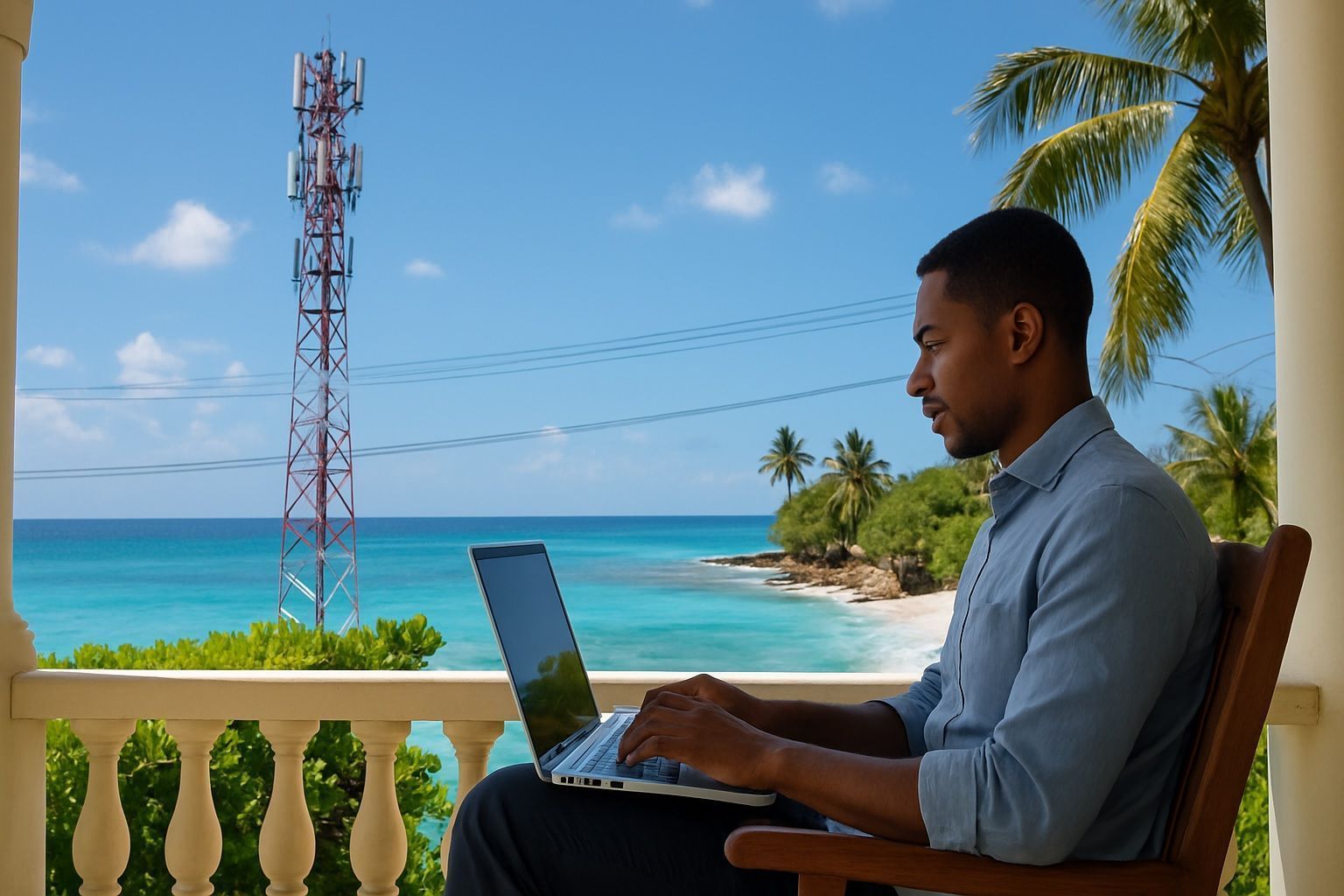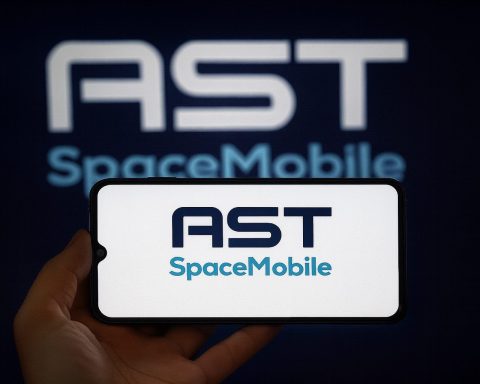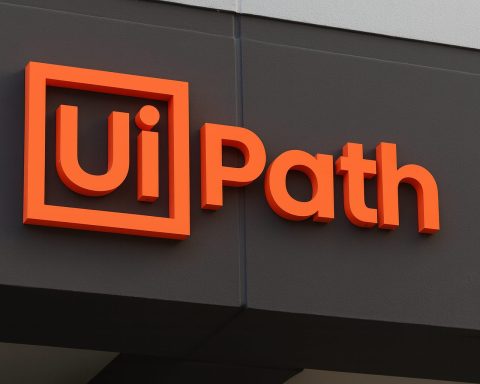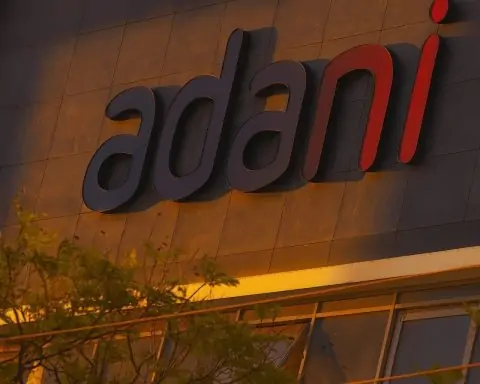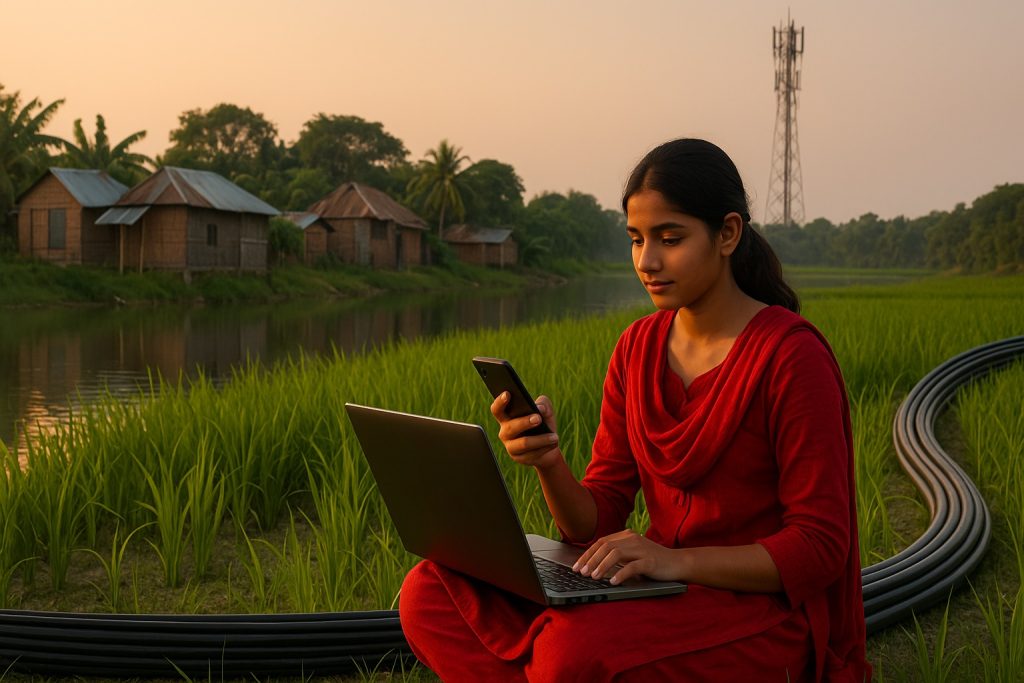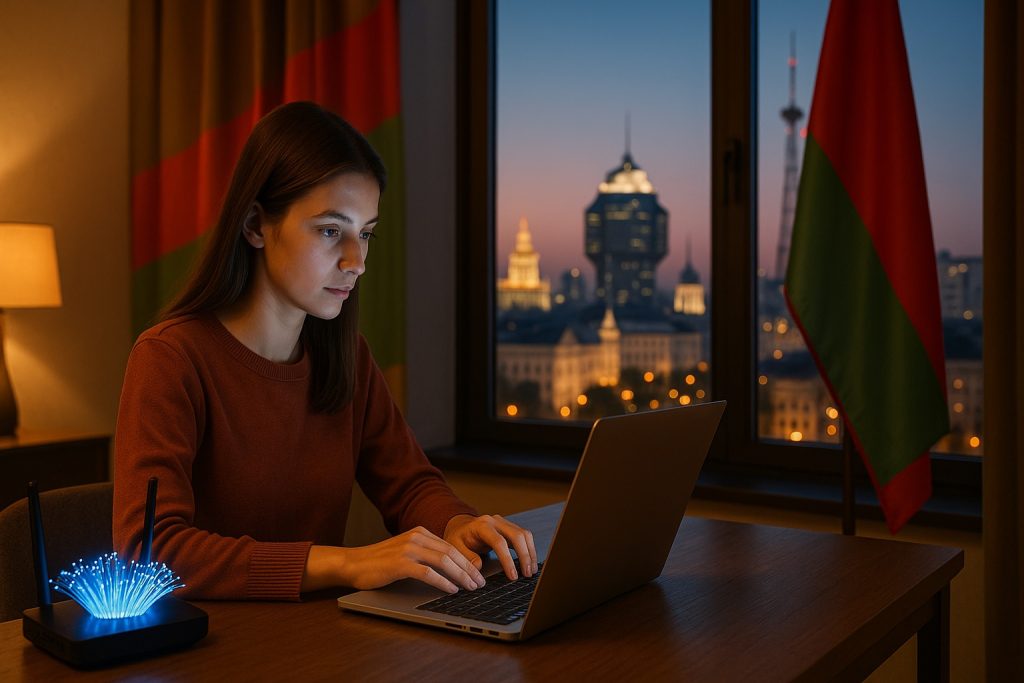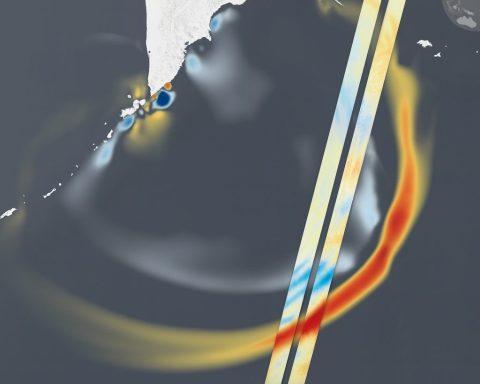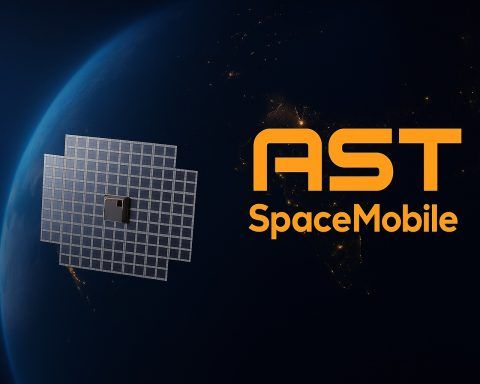- As of early 2025, internet penetration in Barbados stood at about 80% (roughly 226,000 users), down from 85.8% in January 2023 (about 241,800 users).
- In 2023 Barbados had 332,900 mobile connections, equivalent to about 118% penetration.
- Flow and Digicel remain the duopoly in Barbados as of 2025, with the government licensing KW Telecommunications (KW Telecom) as a third operator in late 2023 to spur competition and potential 5G entry.
- Flow Barbados launched a 100% Fibre-to-the-Home network by the mid-2010s, offering Flow Fibre plans up to 1 Gbps.
- The Antilles Crossing submarine cable, built in the 2000s and later part of the Southern Caribbean Fiber network, connects Barbados directly to the U.S. via Saint Croix.
- Digicel launched 4G LTE in Barbados in 2016 and Flow followed in 2017, delivering tens of Mbps; as of 2025, 5G is not yet commercially available.
- SpaceX Starlink became available in Barbados in November 2022, offering 100+ Mbps speeds, 20–40 ms latency, with a one-time dish price of $400–$600 and monthly service around $90–$120.
- Barbados pursued universal public Wi‑Fi with a goal of 100% coverage and deployed free hotspots in parks, Independence Square, and bus terminals, with schools connected at 50 Mbps+.
- Barbados’ fixed broadband mean download speed reached about 97.3 Mbps in mid-2024 and 98.15 Mbps in January 2025, among the Caribbean’s fastest.
- A Barbados Internet Exchange (BARIX) was set up by an MOU among ISPs, but local content caching remains limited with only about 23% of top visited sites reachable in-country.
Barbados is one of the Caribbean’s frontrunners in internet connectivity, with widespread access for consumers and businesses alike. As of the mid-2020s, roughly four out of five Barbadians use the internet, reflecting a high penetration rate of around 80–85% of the population [1] [2]. Both individual users and enterprises increasingly rely on fast, reliable broadband for everything from everyday communication to critical business operations. This report provides a comprehensive look at Barbados’ internet landscape – covering the available infrastructure (fiber, DSL, mobile, fixed wireless, and satellite), the major service providers and their offerings, pricing for home and business plans, the historical evolution of connectivity, government initiatives, and how Barbados compares with its Caribbean neighbors and global benchmarks. Finally, we examine emerging trends and upcoming projects that are shaping the future of digital connectivity on the island.
Overview of Consumer and Business Internet Access
Barbadian consumers enjoy broad internet availability, with services accessible in both urban and rural areas. Internet penetration stood at 85.8% of the population at the start of 2023 (about 241,800 users) [3], and by early 2025 it was estimated at 80% (around 226,000 users) [4] – a slight adjustment reflecting updated data. This high usage places Barbados among the top in the region for connectivity [5]. Households commonly subscribe to broadband packages for home use, and there is also near-ubiquitous mobile internet usage – in 2023 Barbados had 332,900 mobile connections, exceeding the population (≈118% penetration) [6]. This indicates many users maintain multiple mobile subscriptions or devices, underscoring how integral mobile data is for daily life.
Local businesses, from small enterprises to large organizations, depend on robust internet access for their operations. Most companies utilize fixed broadband (often fiber) for office connectivity, complemented by mobile data for on-the-go needs. Both major operators offer specialized business plans and dedicated services to the commercial sector. For instance, Digicel’s business division connects companies with speeds from 150 Mbps up to 1 Gbps, often with scalable bandwidth and dedicated support [7]. Corporate customers may opt for guaranteed symmetrical links and service-level agreements to ensure reliability, reflecting the mission-critical nature of connectivity for finance, tourism, IT services, and other key industries in Barbados. Overall, internet access is nearly universal for Barbadian businesses and is a cornerstone of the island’s modern, service-driven economy.
Internet Infrastructure: From Fiber to Satellite
Barbados has developed a multi-tiered internet infrastructure that delivers connectivity through various technologies. These include an extensive fiber-optic network, legacy copper-based DSL lines, nationwide mobile (cellular) networks, fixed wireless broadband options, and satellite links. Each plays a role in reaching users across Barbados’ 430 km² area, ensuring coverage from the capital Bridgetown to rural parishes. Below, we examine each type of infrastructure:
Fiber-Optic Broadband
Fiber-optic connectivity forms the backbone of Barbados’ fixed broadband network. The island has aggressively adopted fiber-to-the-home/building (FTTH) technology over the past decade to replace older copper and coaxial systems. In fact, the leading ISP Flow boasted the Caribbean’s first nationwide “100% Fibre-to-the-Home” network in Barbados by the mid-2010s [8]. This substantial investment means that most residential and commercial premises can access high-speed fiber service. Fiber links enable symmetrical broadband speeds (equal download and upload rates) that are far higher than previous DSL or cable offerings – today gigabit-level plans (up to 1000 Mbps) are available to households and businesses. For example, Flow Barbados markets fiber plans up to 1 Gbps download/upload, leveraging FTTH to deliver ultra-fast internet [9]. Digicel, the other main provider, similarly offers fiber packages (branded “Digicel+” or “Fiber Ultra”) with speeds up to 1 Gbps symmetrically [10]. Fiber infrastructure also underpins the island’s international capacity: multiple submarine fiber-optic cables link Barbados to the global internet. Notably, the Antilles Crossing cable (later part of the Southern Caribbean Fiber network) was built in the 2000s to connect Barbados directly to the U.S. via Saint Croix [11] [12], greatly enhancing bandwidth for the country. Thanks to these fiber investments, Barbados enjoys high-quality broadband with low latency, capable of supporting streaming, cloud services, and other data-intensive applications for its population.
DSL and Copper Networks
Digital Subscriber Line (DSL) over copper telephone lines was the early form of broadband in Barbados, introduced in the late 1990s and 2000s by the incumbent telco (Cable & Wireless, now Flow). DSL significantly improved on dial-up speeds and spurred the initial growth of home internet access. However, DSL networks have much lower capacity than fiber and performance diminishes with distance from telephone exchanges. In Barbados, typical ADSL speeds topped out in the single tens of Mbps under ideal conditions, which eventually became insufficient for modern usage. Over time, DSL has been largely superseded by fiber and cable upgrades on the island. Flow in particular migrated customers from ADSL to its new fiber network as part of its FTTH initiative [13]. In the present day, remaining copper-based lines are mostly used for voice telephony or in a few areas not yet reached by fiber. That said, the legacy copper infrastructure still provides a baseline of connectivity (ensuring even remote or older-premises have at least some internet access), and DSL can serve as a backup in case of fiber outages. Overall, DSL played a crucial historical role in Barbados’ internet adoption, but it now occupies a minor place in an era dominated by high-speed fiber broadband.
Mobile Networks (4G and 5G)
Mobile internet is pervasive in Barbados, delivered via the cellular networks of the two main carriers (Flow and Digicel). 4G LTE coverage extends across virtually the entire island, giving users on smartphones and wireless modems access to broadband on the go. Digicel launched Barbados’ first 4G LTE service in 2016 (in Bridgetown), and Flow followed in 2017 with its LTE network [14]. Since then, both operators have built out extensive LTE cell sites covering urban and rural areas, using bands around 700 MHz, 850 MHz, 1900 MHz, etc. to ensure both coverage and capacity [15]. Mobile data speeds in Barbados are relatively fast by regional standards – LTE users often see tens of Mbps throughput under good conditions, and the networks have been upgraded over time (e.g. LTE-Advanced features and additional spectrum) to improve performance. In fact, Flow Barbados has been recognized by independent analysts for offering one of the fastest mobile networks in the country [16], complementing its fixed broadband leadership.
As of 2025, 5G technology is on the horizon but not yet commercially available in Barbados. The telecom authorities and operators have adopted a cautious approach, focusing on maximizing 4G services first. There have been no official 5G launches to date, and officials in 2023 indicated no immediate plans for 5G rollout, given that there is still “plenty of scope” to improve LTE coverage and capacity [17]. Nonetheless, both Flow and Digicel are technically preparing for next-generation mobile service – for example, Flow’s parent company has trialed 5G in other Caribbean markets (Cayman Islands became the first in mid-2024) [18] [19]. Once spectrum is allocated and market conditions ready, Barbados is likely to see 5G deployments bringing even higher wireless speeds (potentially 10× faster than 4G with ultralow latency) [20]. In the meantime, 4G LTE remains the workhorse for mobile internet, enabling everything from social media and HD video streaming to mobile banking across Barbados. The ubiquity of mobile data – combined with affordable smartphones – has been key to bridging the digital divide, since essentially the entire population can get online via cellular networks.
Fixed Wireless Access
In addition to wired options, Barbados has utilized fixed wireless broadband in certain segments. Fixed wireless refers to internet delivered wirelessly to a home or business via radio links (often using cellular or microwave technology) as an alternative to a physical cable connection. In the 2010s, a notable provider was Ozone Wireless, which entered the market as a third mobile operator and also offered wireless broadband (4G LTE) to fixed locations [21] [22]. Ozone deployed an island-wide LTE network and provided modem devices for homes, advertising peak data rates up to ~50 Mbps over the air [23]. This offered consumers an alternative to the incumbents, especially in areas where running new fiber or cable was difficult. However, Ozone Wireless struggled financially and ceased operations by 2019, leaving the market dominated again by Flow and Digicel.
Today, fixed wireless access (FWA) is still available, but primarily through the LTE networks of the two main ISPs. For example, Digicel and Flow can supply a 4G LTE router to customers as a home internet solution, typically on similar plans to mobile data. This can be useful in outlying areas or temporary premises where fiber isn’t installed. The Barbados government and regulator have also encouraged wireless solutions to reach remaining underserved spots. Given the small geographic size of Barbados and its high fiber coverage, fixed wireless is a niche solution – useful for redundancy or remote pockets – rather than a primary mode of access. In the future, as 5G rolls out, advanced fixed wireless (using 5G) could become another option for last-mile broadband with fiber-like speeds, but that will depend on spectrum allocation and investment by the new or existing operators. For now, the main fixed wireless usage is via the well-established 4G networks, ensuring even those without a wired line can get decent home internet service.
Satellite Connectivity
Satellite internet has historically played a minimal role in Barbados’ connectivity, but it is now emerging as an important complementary service. In the past, a few users (such as rural residents, maritime users, or as a backup for businesses) accessed satellite broadband through geostationary providers, albeit with high latency and cost. These legacy satellite options (e.g. VSAT links) were typically last resorts due to slow speeds and data caps. However, the satellite scenario changed dramatically with the advent of Low Earth Orbit (LEO) constellations. In late 2022, SpaceX’s Starlink satellite service became available in Barbados [24]. Starlink’s network of hundreds of low-orbit satellites delivers high-speed, low-latency internet to small dish terminals on the ground. SpaceX announced coverage in Barbados in November 2022, noting that approximately 30% of Barbados’ population lacked reliable high-speed internet at the time, and positioning Starlink as a solution for rural and remote communities [25]. Since its launch, Starlink has been adopted by users in Barbados who are outside the fastest fiber footprints or who desire a redundant connection. The service can deliver 100+ Mbps download speeds with latency around 20–40 ms – comparable in performance to fixed broadband – using a self-installed pizza-sized antenna [26].
The costs for Starlink in Barbados include a one-time equipment fee (around USD $400–600 for the dish) and a monthly subscription of roughly USD $90–120, which is competitive with high-end local broadband plans. This makes satellite a viable option not only for remote homes but also for yachts, inter-island vessels, or as emergency backup (especially important given the hurricane risk in the region). Besides Starlink, other satellite providers (like OneWeb’s upcoming LEO network or regional GEO satellites) may also target Barbados, but as of 2025 Starlink is the most prominent. Looking ahead, satellite connectivity is expected to augment Barbados’ internet ecosystem by reaching any remaining dark spots and providing additional resilience. It is not a replacement for terrestrial broadband in urban areas, but it greatly expands coverage to “last-mile” users who might otherwise be left behind. The presence of modern satellite options underscores Barbados’ commitment to achieving connectivity for all, leveraging both earth-bound and space-based infrastructure.
Major Internet Service Providers in Barbados
Despite its small size, Barbados has a dynamic telecom market historically served by a few key players. Flow and Digicel are the two dominant Internet Service Providers (ISPs) today, offering a full suite of services (fixed broadband, mobile, and often TV/telephone bundles). These two constitute a duopoly for most consumer and business telecom needs. In recent years, the government has taken steps to introduce new competition, but as of 2025 the market remains essentially split between Flow and Digicel.
- Flow Barbados: Flow is the brand name of Cable & Wireless Communications (CWC) in Barbados (formerly known as LIME, and before that, Barbados Telephone & Telegraph). Flow is the incumbent operator with a long history – it originated from the national telecom monopoly and today is part of the Liberty Latin America group. Flow provides fixed broadband (fiber and legacy DSL), landline telephony, pay TV, and mobile services. It inherited a substantial copper network and was also involved in cable TV networks; following a merger with Columbus Communications in 2015, Flow gained a modern HFC/fiber infrastructure as well. Flow has leveraged these assets to build out the island-wide fiber-optic access network and, as noted, launched LTE mobile service in 2017 [27]. Flow is known for its high-speed “Flow Fiber” broadband, including packages at 250 Mbps, 500 Mbps, and 1 Gbps for home users. Independent analyses have repeatedly ranked Flow as Barbados’ fastest internet provider on both fixed and mobile networks [28]. For example, Ookla’s Speedtest awards in 2016 confirmed Flow had the “Fastest Broadband Network” in Barbados (and likewise the fastest mobile network) based on nationwide speed data [29] [30]. As the incumbent, Flow has the widest infrastructure reach and still serves certain remote customers via DSL or fixed wireless where fiber isn’t present. Its mobile arm operates on GSM/LTE technology and has a majority share of mobile subscriptions. In sum, Flow is positioned as a full-service telecom provider, often bundling services (e.g. triple-play fiber internet + TV + phone) and leveraging its brand legacy. It continues to invest in network upgrades and has even been testing new technologies (Flow was involved in initial 5G trials in other markets via its parent company).
- Digicel Barbados: Digicel entered the Barbadian market in 2004, breaking the longstanding Cable & Wireless monopoly on mobile service [31]. An Irish-founded telecom group, Digicel rapidly became a market leader in mobile – by 2015 it had about 57% of Barbados’ mobile market share [32] due to aggressive pricing and marketing. Building on that success, Digicel expanded into the fixed broadband arena as well. Around 2013–2014, Digicel acquired regional fiber assets (including some of the Columbus/Flow fiber network in Barbados, as part of regulatory conditions) [33], and launched its own fiber-to-the-home services under the brand “Digicel Play” (later Digicel+). Digicel invested an estimated USD $42 million to roll out a 1,000 km fiber network across Barbados [34] [35]. Today, Digicel offers fiber broadband plans up to 1 Gbps, similar to Flow’s offerings, and competes head-to-head in the residential and corporate internet market. Digicel’s home internet plans are branded with tiers like “Fibre 400”, “Fibre 700”, etc., indicating their speeds. For instance, Digicel’s Fibre 1000 Ultra plan provides 1000 Mbps service (1 Gbps) for about BBD $255 per month [36]. The company also offers lower tiers (e.g. 400 Mbps, 700 Mbps) and bundle deals that can include TV and landline. On the mobile side, Digicel operates a parallel GSM/UMTS/LTE network, and it was the first to launch LTE in Barbados (2016) [37]. Digicel has built a reputation for innovative marketing and was an early adopter of digital services (like its Digicel Apps, mobile money, etc.) in the Caribbean. However, it has faced financial challenges at the group level in recent years, leading to debt restructurings [38], but the Barbados operations remain core to its Caribbean footprint. Digicel’s focus is on high-performance networks and customer service improvements to steal market share from Flow. The competition between Flow and Digicel has generally benefited consumers through improved offerings and coverage.
- Other ISPs: In the past, Barbados saw a handful of smaller ISPs and telecom ventures. TeleBarbados was one such competitor that emerged in 2005 after market liberalization. Backed partly by Barbados Light & Power, TeleBarbados provided enterprise internet and even built the Antilles Crossing submarine cable [39] [40]. It was eventually absorbed via acquisitions (parts ending up with Columbus/Flow and Digicel) [41], and the brand is no longer prominent in the consumer space. Sunbeach was another early ISP (offering dial-up and some wireless services) which launched on CDMA mobile technology, but it struggled and closed by 2013 [42]. More recently, Ozone Wireless (founded 2011) entered as a third mobile and wireless broadband provider; despite initial expansion, Ozone went bankrupt and shut down in 2019, citing heavy competition and debts. As of 2023, a new company called KW Telecommunications Ltd. has been licensed to fill the role of a third operator [43]. Little is publicly known about KW Telecom’s plans or investors, but the government hopes this new entrant will deploy services (potentially including 4G/5G or fixed wireless) to increase competition and innovation in the Barbados telecom market [44].
In summary, Flow and Digicel are the two major ISPs serving Barbados today, each offering comparable portfolios of fiber broadband and island-wide mobile coverage. They compete on speed, price, and customer service. Smaller players have come and gone, but the market is tightly held by these two. Regulators are keen on introducing a viable third provider to challenge the duopoly, which could lead to better prices and new technology (for example, a newcomer might leap straight to 5G or novel wireless solutions). For now, consumers generally choose between Flow or Digicel for internet access, both of which continue to upgrade their networks to meet the growing demand for bandwidth.
Internet Service Plans and Pricing in Barbados
Internet service in Barbados is offered through tiered plans that cater separately to residential and commercial needs. Both Flow and Digicel have a menu of packages with varying speeds and prices, often quoted in Barbados Dollars (BBD). Below is a comparison of typical fixed broadband plans for home users from the two main ISPs (prices are monthly, in BBD):
| Provider | Plan Name | Download/Upload Speed | Monthly Price (BBD) |
|---|---|---|---|
| Flow | Superfast Fibre + 250 | 250 Mbps / 250 Mbps | $115 (promo $100) [45] |
| Flow | Superfast Fibre Ultra 500 | 500 Mbps / 500 Mbps | $170 [46] |
| Flow | Superfast Giga 1000 | 1000 Mbps / 1000 Mbps | $230 [47] |
| Digicel | Fibre 400 Ultra | 400 Mbps / 400 Mbps | $130 [48] |
| Digicel | Fibre 700 Ultra | 700 Mbps / 700 Mbps | $185 [49] |
| Digicel | Fibre 1000 Ultra | 1000 Mbps / 1000 Mbps | $255 [50] |
Table: Sample residential broadband plans in Barbados (speeds are symmetrical). BBD $2 = USD $1.
As shown, entry-level fiber packages start around 250–400 Mbps download speeds for roughly BBD $115–$130 per month (≈USD $57–$65). Higher tiers scale up to gigabit service at around $230–$255 BBD (≈USD $115–$127) monthly. Notably, all these plans provide unlimited data and symmetric upload/download speeds – a reflection of the all-fiber access network. The competition between Flow and Digicel has resulted in fairly similar pricing structures, with periodic promotions (e.g. first month half off, or bundle discounts) used to entice new sign-ups. Both providers often bundle internet with digital TV and landline phone service at a combined rate that’s cheaper than purchasing each separately. For example, a Flow bundle might include 250 Mbps internet + TV + home phone for around $150–$160 BBD. Digicel similarly advertises bundle deals (called “Home Fibre Bundles”) around $175 BBD that package broadband, TV and a landline [51].
Business-grade services are also available from the ISPs, typically under separate “business solutions” branding (e.g. Flow Business, Digicel Business). Small businesses often subscribe to standard plans similar to residential but with added features like static IP addresses or priority support. The prices for these are in the same ballpark, though sometimes with a slight premium. For larger enterprises and mission-critical needs, providers offer dedicated Internet Leased Lines and Metro Ethernet connectivity, which can guarantee bandwidth and uptime via service level agreements. These dedicated services can range from 10 Mbps up to multi-gigabit speeds, customized per client. Pricing for dedicated business circuits is not publicly listed (it’s usually contract-based), but they cost significantly more per Mbps than shared residential plans – in exchange for dedicated capacity and 24/7 support. As an illustration, Digicel’s business connectivity solutions advertize symmetric speeds from 150 Mbps up to 1 Gbps, with scalable options for growing companies [52].
It’s worth noting that broadband pricing in Barbados, while higher than in some developed markets, has become more affordable relative to income over time. The International Telecommunication Union (ITU) tracks that a basic fixed broadband plan in Barbados costs around 3.2% of GNI per capita (as of recent data) [53], which is a moderate level of affordability for a small island state. The government does not regulate retail internet tariffs (pricing is set by the market), but the Fair Trading Commission (FTC) oversees certain aspects like consumer protection and has imposed Quality of Service standards on Flow’s fixed network [54]. (Currently, due to legal gaps, the FTC cannot enforce identical QoS rules on Digicel, though this may change with updated telecom legislation [55].) Overall, consumers and businesses in Barbados benefit from a range of plan choices. Whether one needs a basic connection for emailing or an ultrafast link for streaming and cloud applications, the island’s ISPs offer a plan to match, and prices have remained stable even as speeds increase – barring some modest rate hikes for inflation that have occurred (Flow, for instance, implemented a small price adjustment in 2024 on some packages [56]).
Satellite Internet Availability and Usage Trends
Satellite internet has become an increasingly discussed component of Barbados’ connectivity landscape, especially with the introduction of SpaceX Starlink. When Starlink went live in Barbados in late 2022, it marked the first time a high-performance satellite broadband option was widely accessible to the general populace [57]. This development is significant for several reasons:
- Reaching Underserved Areas: Although Barbados has high broadband coverage, there are still some pockets (estimated ~30% of the population in 2022) without reliable high-speed access [58]. These may include very remote homes or areas where the terrain or economics made fiber deployment challenging. Starlink’s satellite beams can cover the entire island, providing those users an immediate way to get online at speeds often above 100 Mbps. This helps close the remaining connectivity gap by bringing service “to the last house.”
- Ease of Setup: Starlink does not require extensive infrastructure locally – users only need to set up a small dish antenna and Wi-Fi router themselves. This plug-and-play model (and the fact that no government permits were reported as obstacles) made it straightforward for Barbadians to subscribe and install, without waiting for cables to be run [59].
- Performance: Early adopters in Barbados have reported that Starlink’s performance can rival terrestrial broadband for many uses. Download speeds of 50–150 Mbps and uploads of 10–30 Mbps are common, with latency ~30 ms – far better than legacy geostationary satellite internet, which often had 600+ ms latency. Unlimited data is another advantage, as Starlink currently offers no data caps on its standard plans [60]. This means users can stream video, make video calls, and do online gaming via satellite, which was previously impractical.
- Costs: The main drawbacks remain the costs – Starlink hardware and monthly fees represent a relatively large expense for average consumers. The equipment (dish kit) runs a few hundred US dollars; local retailers even started offering it (one advertisement promoted Starlink units at a big-box store in Barbados) as soon as it became available [61] [62]. Monthly service is around USD $100 (≈ BBD $200). By comparison, a top-tier fiber plan on island (1 Gbps) costs about BBD $230. So Starlink is price-competitive with the highest-end local service, but more expensive than entry-level plans. That said, for those who previously had no broadband option, the price is justified by the connectivity gained.
- Use Cases and Trends: Beyond remote residents, satellite internet in Barbados is finding niche use cases. For example, small business owners in areas with spotty wired service use Starlink to ensure they can run credit card machines and cloud applications reliably. Some tech-savvy households are adopting it as a backup internet to complement their fiber line – adding resilience in case undersea cable issues or local outages occur. Additionally, Barbados’ maritime and tourism sector benefits: yacht owners and cruise ships near Barbados can utilize Starlink Maritime service to give passengers broadband at sea. With Barbados positioning itself as a smart island, having multiple redundant connectivity paths (fiber + satellite) is seen as strengthening overall digital resilience.
Looking forward, as satellite constellations grow, we may see even lower prices or higher speeds via satellite. OneWeb (a LEO competitor) could partner with Caribbean telecom companies to offer services, and Amazon’s Project Kuiper is on the horizon too. However, Starlink’s early mover advantage has set a high bar. The government of Barbados has so far been welcoming of these services – recognizing that they can help achieve universal internet access goals without heavy local infrastructure investment. In summary, satellite internet has transitioned from a fringe solution to a viable mainstream option in Barbados within the past couple of years, particularly for those beyond the reach of fiber. It exemplifies the “digital wave” connecting even the hardest-to-reach users, and its role is expected to grow as part of Barbados’ connectivity mix.
Historical Development of Internet Infrastructure
Barbados’ journey to today’s digitally connected society spans several decades, marked by phased upgrades and policy shifts:
- 1990s – Dial-up and Early Internet: Like many countries, Barbados first accessed the internet via dial-up services over telephone lines. The national carrier (Cable & Wireless) introduced dial-up internet (branded services such as Caribsurf) in the mid-1990s, allowing users to connect through modems at a slow 14–56 kbps. Internet usage was initially limited to academics, businesses, and wealthier households, but it set the stage for growth. By the late 90s, basic websites and email were in use in Barbados, though penetration remained low.
- Early 2000s – Broadband Emerges: The early 2000s saw the advent of ADSL broadband over the existing copper telephone network. Cable & Wireless rolled out ADSL by the early 2000s, offering “always on” connections of a few Mbps – a huge improvement over dial-up. This dramatically increased home internet adoption. In parallel, Barbados had a Cable TV operator (from which Columbus/Flow would descend) that began offering cable modem internet in select areas. The government recognized ICT as a development pillar and in 2004 formulated an initial draft for a national ICT strategy (though a finalized broadband policy was slow to materialize [63]).
- Telecom Liberalization (circa 2003–2005): A major turning point was the liberalization of the telecom sector in the early 2000s. The government ended Cable & Wireless’ monopoly, paving the way for new entrants. Digicel’s entry in 2004 in the mobile market broke the monopoly there, unleashing competition that led to better mobile coverage and lower prices [64]. Around the same time, TeleBarbados was licensed as a competitor in fixed telecom. TeleBarbados built out a business-focused network and notably constructed the Antilles Crossing subsea fiber cable in 2006 to improve international bandwidth [65] [66]. Another local ISP, Sunbeach, offered dial-up and attempted wireless services, but it ultimately could not scale and ceased operations by 2013 [67]. By the mid-2000s, Barbados had a more competitive market structure in place and internet usage was rising steadily (yet broadband was still relatively expensive and limited in reach).
- Late 2000s – Cable/Fiber and WiMAX: In 2008, Columbus Communications (brand name Flow) launched operations in Barbados, having acquired the incumbent cable TV provider. Flow introduced higher-speed cable modem internet and digital TV, challenging Cable & Wireless (renamed LIME by then) on the fixed broadband front. WiMAX technology was briefly part of the landscape – providers like Green Dot (Trinidad-based) tested wireless broadband in Barbados, and TeleBarbados also had WiMAX trials. These offered ~1–2 Mbps wireless links, but coverage was limited. By 2010, broadband (fixed + mobile 3G) penetration was climbing and the government drafted the National ICT Strategic Plan 2010–2015, articulating a vision of transforming Barbados into “an efficient networked island” [68]. This plan covered areas like e-government, education, and infrastructure development; however, no dedicated National Broadband Plan was in place at that time [69]. The telecom regulator (FTC) and Telecommunications Unit were active in facilitating number portability and liberalization, but funding and expertise constraints sometimes slowed regulatory reform [70] [71].
- 2010s – The Fiber Revolution and 4G Era: The 2010s were transformative. In mobile, Barbados leapfrogged from 2G/3G to 4G LTE by 2016–2017 [72]. In fixed networks, perhaps the biggest leap was the rollout of island-wide FTTH. After Cable & Wireless and Columbus (Flow) merged in 2015, the combined entity (using the Flow brand) undertook aggressive fiber deployment, aiming to convert all broadband customers from copper or coax to fiber. By 2016, Flow Barbados announced it had implemented the world’s first fully FTTH country network (a marketing claim highlighting 100% fiber coverage of its plant) [73]. Whether fully 100% or not, Barbados certainly saw most neighborhoods wired with fiber optics by the late 2010s, enabling gigabit speeds. Digicel, not to be left behind, invested heavily as well – Digicel acquired some of the redundant Columbus fiber network (as a condition of the merger) [74] and built out its Digicel Play fiber service, reaching tens of thousands of homes by 2017 [75]. By 2019, the fixed broadband market was essentially fiber vs fiber, with DSL and cable modems largely phased out. On the mobile side, both carriers upgraded to HSPA+ then LTE, giving users mobile data speeds above 10 Mbps and wide coverage. A short-lived new mobile operator, Ozone Wireless, launched in 2017 with LTE service hoping to grab customers from Digicel and Flow with competitive data plans [76]. Ozone’s presence initially drove some price competition, but it faced operational and financial difficulties. By August 2019, Ozone shut down, citing heavy debt (they owed ~$8 million to Flow and Digicel in interconnection and facility fees) [77]. The failure of Ozone reinstated the duopoly, albeit with Flow and Digicel now fairly balanced and continuously upgrading their networks.
- 2020s – Consolidation and Modernization: Entering the 2020s, Barbados had high internet penetration and very advanced infrastructure for a developing nation. Key developments in this period include the introduction of mobile number portability in 2022 (allowing customers to keep their phone number when switching providers), which the government implemented to increase consumer freedom [78]. The COVID-19 pandemic in 2020–2021 underscored the importance of digital infrastructure, as remote work and online schooling surged – Barbados’ networks coped relatively well, with operators doubling down on fiber and LTE capacity upgrades. In November 2022, Starlink’s arrival (discussed earlier) added a new dimension to connectivity. Regulators also approved fixed number portability (for landlines) to further level the playing field [79]. In late 2023, the government announced it had granted a license to KW Telecommunications (KW Telecom) to become the third telecom operator, aiming to launch services and compete in both mobile and possibly fixed wireless domains [80]. This indicates a policy push to avoid complacency in the Flow-Digicel duopoly and encourage fresh investment. Technologically, attention has turned to 5G planning – Barbados has been studying 5G use cases (for smart city applications, IoT, etc.), but as noted, actual rollout is pending while carriers maximize 4G for now. Meanwhile, both Flow and Digicel have upgraded their international connectivity: Flow (via C&W/Liberty) has shares in multiple submarine cables and is upgrading undersea capacity in the region [81], and Digicel has built the Deep Blue One cable system in the southern Caribbean (complementing its existing Southern Caribbean Fiber network) [82] [83] – these ensure Barbados has diverse, high-bandwidth routes to the global internet, reducing the risk of outages from a single cable cut. By 2025, average broadband speeds in Barbados have risen to nearly 100 Mbps [84] (from just 45 Mbps in 2017 [85]), highlighting the rapid improvements in service quality over the past decade.
In summary, Barbados’ internet infrastructure evolved from monopoly-run dial-up in the 90s to a competitive, fiber-rich environment today. Key milestones were market liberalization (ushering in competition), strategic investments in fiber optics and 4G, and progressive regulatory measures. Each phase built on the last, enabling Barbados to now stand as one of the most connected nations in the Caribbean.
Government Initiatives, Regulation, and Investment in Digital Connectivity
The Government of Barbados has actively pursued policies to expand and enhance internet access as part of its national development agenda. Several initiatives and regulatory actions illustrate this commitment:
- National ICT Strategy: The government formulated a “National Information and Communications Technologies Strategic Plan (2010–2015)” to guide the digital transformation of Barbados [86]. This plan’s vision was “to utilise ICTs to transform Barbados into a globally competitive society” [87]. While this broad strategy covered e-government, education, and business digitization, it implicitly recognized the need for widespread broadband. However, it was noted that Barbados did not have a dedicated national broadband plan during that period [88]. The Telecommunications Unit has since worked (with international assistance) on drafting a focused Broadband Plan, but tangible outcomes of that are not widely publicized [89]. Regardless, the strategic direction from the government has consistently been to improve ICT infrastructure and literacy.
- Regulatory Oversight: Barbados’ telecom sector is regulated by agencies like the Fair Trading Commission (FTC) and the Telecommunications Unit (under the Ministry of Innovation, Science and Smart Technology). The FTC oversees consumer protection, price regulation for certain legacy services, and quality standards. For example, the FTC enforces Quality of Service (QoS) regulations on Flow’s fixed network to ensure reliable service (metrics include uptime, fault repair time, etc.) [90]. Due to an out-of-date legal framework, these QoS rules haven’t yet been extended to Digicel, something the government aims to rectify as it updates laws for a converged regulator [91]. Barbados also adheres to regional regulations like those by the Caribbean Telecommunications Union (CTU) when applicable.
- Competition and Market Structure: The government has taken steps to foster competition. The initial liberalization in the 2000s was one such step, inviting Digicel and others in. More recently, in March 2022, the government announced the licensing of a new telecom operator (KW Telecommunications Ltd.) to operate in Barbados [92]. Officials explicitly stated this was to “break up the long-standing Digicel-Flow duopoly” and give consumers more choice [93]. Additionally, Barbados implemented number portability: starting 2019 for mobile and 2021 for fixed, consumers can switch providers without changing their phone numbers [94]. This regulatory measure lowers barriers to switching and thus intensifies competition on service quality and price.
- Universal Service and Public Wi-Fi: Ensuring equitable access has been another focus. Barbados established a Universal Service Fund (USF), collected from telecom operators, to finance connectivity projects in under-served communities (common in many Caribbean nations). One high-profile goal announced in the 2010s was to make Barbados the first country with 100% free Wi-Fi coverage for all citizens [95]. This ambitious initiative, championed by the Barbados Entrepreneurship Foundation and dubbed “11.11.11 Wi-Fi Barbados – Wi Not?”, aimed to blanket public spaces with free wireless internet. While full island-wide free Wi-Fi was not completely realized, it led to many public hotspots being set up. For instance, by 2019 the National Conservation Commission (NCC) in partnership with Digicel rolled out free Wi-Fi in national parks and open areas [96]. The government noted that providing Wi-Fi in these public parks “gives access to all and will also power the new national digital economy” [97]. Today, residents can enjoy free internet at places like Bridgetown’s Independence Square and various bus terminals, thanks to these efforts. The push for universal connectivity continues, with ongoing projects to equip community centers, libraries, and schools with internet access (all public schools have been connected, with at least 50 Mbps links, under earlier programs [98]).
- International Partnerships and Funding: Barbados has leveraged international aid and financing for ICT development. The World Bank and IDB have included Barbados in regional digital initiatives, such as funding for government digital platforms and skills training (e.g. the IDB’s “Caribbean Digital Transformation” program). The Commonwealth Telecommunications Organisation (CTO) assisted Barbados in broadband planning [99]. More broadly, Barbados has been a voice in CARICOM for collective digital advancement. The government is also innovating financing for resilient infrastructure – for example, a debt swap for climate resilience in 2022 freed up funds for infrastructural upgrades, some of which could indirectly benefit telecom (burying cables, backup power for towers, etc.) [100] [101].
- Digital Economy and E-Government: Alongside physical infrastructure, the government has invested in digitizing public services and fostering a tech-friendly business environment. Barbados’ “Digital ID” project and online government portals are being developed to make citizen services accessible online. The “Skills for the Future” program (with IDB support) aims to prepare the workforce for a digital economy [102]. All these initiatives drive demand for reliable internet and justify further upgrades in connectivity.
In conclusion, the government’s role has been pivotal in shaping Barbados’ internet landscape. Through liberalization, regulation, universal access initiatives, and strategic planning, it has created an environment where private ISPs invest and competition thrives, while also ensuring that connectivity aligns with public interest (schools, parks, and vulnerable communities coming online). There is recognition at the highest levels that digital connectivity is tied to economic growth and inclusion – as one minister put it, broadband is “not a luxury but a necessity” for development [103]. This ethos continues to guide Barbados’ policies in the digital domain.
Internet Performance and Penetration: Barbados in Context
Barbados today ranks among the Caribbean’s best in terms of internet penetration and broadband performance. About 80% of Barbadians are internet users [104], which is significantly higher than the global average (~66% internet penetration in 2023) and among the top tier in the Western Hemisphere. Many smaller Caribbean nations have lower internet uptake, often in the 50–70% range, though a few like Antigua and Barbuda (91% in 2024) and Dominica (approximately 74% in 2023) also report high rates. An Inter-American Development Bank study previously identified Barbados as having the highest broadband penetration in the Caribbean [105]. This reflects successful infrastructure deployment and affordable access relative to incomes. Importantly, Barbados has nearly closed the urban-rural divide in basic internet access – with roughly 69% of its population living in rural areas [106], the fact that national penetration is ~80% indicates that rural Barbadians are almost as connected as those in Bridgetown.
In terms of broadband speed, Barbados leads much of the region. The country’s fixed broadband speeds have seen dramatic improvement with the shift to fiber. As of mid-2024, Barbados’ average download speed on fixed networks was measured at about 97.3 Mbps [107]. This places it in the top three in the Caribbean (only the Cayman Islands and Puerto Rico were slightly higher, at ~119 Mbps each) [108]. Across Caribbean countries surveyed in 2024, the regional average was about 54.9 Mbps [109] – meaning Barbados’s average is nearly double the Caribbean mean. In fact, Barbados has consistently topped or been near the top of Caribbean broadband rankings; back in 2017, it was number one with just 45 Mbps [110], and it has maintained a leadership position as that figure doubled.
Barbados consistently ranks among the fastest Caribbean nations for broadband. In mid-2024, the island’s mean fixed download speed (~97 Mbps) was exceeded only by the Cayman Islands and Puerto Rico in the region [111]. Barbados’ broadband performance far outpaces regional peers like Jamaica, Trinidad & Tobago, and the Dominican Republic, and even surpasses the global average speed (around 79 Mbps) [112] [113].
Mobile network speeds in Barbados are also strong. According to Ookla’s Speedtest Intelligence, Barbados’ mobile internet has a median download speed around 30–35 Mbps in recent years (varying as networks upgrade). Flow and Digicel both received awards for network quality. In 2016, for example, Flow was recognized for the fastest mobile data speeds in Barbados [114], and Digicel has also claimed honors in subsequent reports as it expanded LTE. Regional comparisons show Barbados ahead of larger countries like Jamaica (which has ~20 Mbps mobile speeds) and on par with some North American markets in certain metrics.
Comparing globally, Barbados holds up well for a small island nation. In the Speedtest Global Index for January 2025, Barbados’ average fixed download (98.15 Mbps) ranked it around 104th of 180+ countries – just behind some EU countries like Slovenia and ahead of many in Latin America [115] [116]. It is also well above large emerging economies like Mexico (85 Mbps) or India (78 Mbps) on that index [117] [118]. In mobile, Barbados would rank roughly in the middle globally. The global leaders in broadband (Singapore, UAE, etc.) have several hundred Mbps averages due to widespread 10 Gbps fiber and cable, so Barbados isn’t at those extreme levels. However, within its income and population class, Barbados is punching above its weight. For context, Dominican Republic – the Caribbean’s most populous country – had an internet penetration of 89% in 2024 but its average fixed speed (~60 Mbps) lags Barbados [119]. Many neighbors (e.g. St. Lucia, Grenada) have average speeds under 25 Mbps, still dealing with older tech or less competition [120] [121]. Thus, Barbados distinguishes itself by combining high adoption with high quality of service.
Broadband pricing in Barbados, while not cheap, is in line with global norms when adjusted for the level of service. The entry-level price per Mbps has fallen significantly over time. Also, the consumption patterns in Barbados show advanced usage: high social media engagement (75% of the population on social networks) [122], widespread use of smartphones, and growing e-commerce and fintech activity. These are hallmarks of a digitally integrated society, not just one that has basic access.
One area Barbados is working to improve is the local internet ecosystem – for example, increasing local content hosting and caching. According to the Internet Society, only about 23% of the most-visited websites in Barbados are reachable via a local cache or server in-country, meaning a lot of traffic goes overseas [123]. Establishing a stronger Internet Exchange Point (IXP) and encouraging content distribution networks (CDNs) to deploy locally would further improve effective speeds and resilience. A Barbados Internet Exchange (BARIX) was set up via an MOU among ISPs some years ago [124], but its development has been slow. Improving this could be a next step to keep Barbados’ internet performance on an upward trajectory.
In summary, Barbados enjoys near-universal internet access and above-average broadband speeds, especially relative to its region. Its proactive upgrades have paid off in metrics and user experience. The country serves as a model in the Caribbean for how investing in fiber and competitive markets can yield high penetration and performance. Continued efforts (like fostering an IXP, implementing 5G, and pushing connectivity into every community) will likely further bolster Barbados’ standing in the global digital ranks.
Future Trends and Planned Projects in Connectivity
As Barbados looks to the future, several trends and upcoming initiatives promise to further transform its connectivity landscape:
- 5G Mobile Rollout: The transition to 5G is the most anticipated development on the horizon. While no operator has launched 5G commercially yet, plans are quietly taking shape. The government is expected to auction or allocate 5G spectrum (potentially in bands like 3.5 GHz or millimeter wave) once it is confident that deployment will bring tangible benefits. Flow’s parent company has already piloted 5G in some Caribbean markets, and it’s likely Barbados will see 5G cell sites activated in the next couple of years. When it arrives, 5G will enable mobile data speeds in the gigabit range and unlock new applications – from Internet of Things (IoT) sensors in agriculture to augmented reality in tourism. A Barbados Today article on “the future of 5G” highlighted that 5G can handle 1000× more traffic and be 10× faster than 4G, downloading HD videos “in less than a second” [125]. These capabilities, once realized, will support innovations like smart city infrastructure (traffic management, CCTV), telemedicine, and autonomous systems. Planned Projects: Both Flow and Digicel will likely engage in network modernization projects (upgrading base stations, installing 5G core networks) around 2025–2026 to roll out 5G incrementally. The government may facilitate this by offering test licenses or fast-tracking permits. By the late 2020s, we can expect Barbados to have a significant 5G footprint, at least in high-demand zones like Bridgetown, resort areas, and the airport/commerce districts.
- Third Telecom Operator Launch: As mentioned, KW Telecommunications (KW Telecom) has been licensed as a new operator. Little is publicly known about their timeline, but if they commence operations, it could shake up the market. KW Telecom might focus on either niche services or try to compete broadly. One possibility is they partner with a global telecom or technology firm to bring a fresh approach – for instance, leveraging fixed wireless (5G) broadband instead of laying expensive fiber, or focusing on under-served rural pockets and public services. The mere presence of a third player could drive price competition and better customer service among all providers. Planned Projects: We will watch for KW Telecom building infrastructure – perhaps erecting new cell towers or rolling out a pilot network. The government will likely ensure number portability and interconnection agreements are in place so KW can effectively compete. If successful, by a few years from now Barbadians might have a viable third choice for mobile and home internet, which would be a major shift from the long-standing duopoly.
- Fiber Network Upgrades and Expansion: Even though fiber is widespread, the work is never done. Both main ISPs will continue extending fiber to any remaining gaps (new housing developments, etc.). Additionally, technology upgrades like moving to XGS-PON or other next-gen fiber standards could multiply available speeds (potentially offering 2.5 Gbps or 10 Gbps plans to consumers in the future). Planned Projects: Flow and Digicel have been increasing the capacity of their backbone networks. For example, Flow’s owner Liberty Latin America announced plans to upgrade undersea cables and domestic fiber across the Caribbean for greater resilience and capacity [126]. This means Barbados will benefit from higher backhaul bandwidth – critical as data consumption grows ~20% year-over-year. We may also see projects to underground more fiber cabling in Barbados (to protect against hurricanes). With climate change bringing stronger storms, burying telecom lines or hardening infrastructure is likely a priority in coming years, possibly funded through climate resilience grants.
- Public Wi-Fi and Community Networks: Barbados will likely continue its push towards ubiquitous connectivity through public Wi-Fi. There is talk of expanding the free Wi-Fi hotspot program to more public venues – bus stops, health clinics, even beaches – to support tourism and local needs. The vision of “100% Wi-Fi coverage” is not forgotten; instead of blanket free Wi-Fi, the approach might focus on targeted free access zones combined with affordable mobile data for elsewhere. Planned Projects: One concrete plan is to equip all community centers and polyclinics with broadband and Wi-Fi by partnering with ISPs using the Universal Service Fund. Also, smart city projects in Bridgetown could include free Wi-Fi along popular pedestrian areas and on public transport. By ensuring people can get online in public spaces, Barbados supports digital inclusion (people who can’t afford home service can still connect for essential tasks in these zones).
- Smart Island Initiatives: The government’s broader strategy is to build a “smart island” – integrating ICT into all sectors. This includes smarter utilities (smart grids, water management sensors), intelligent transportation systems, and digital government services. All of these require robust connectivity. So future projects may involve deploying IoT networks (perhaps using 5G or LoRaWAN for low-power sensors) and ensuring broadband reaches government facilities, schools, and hospitals with redundancy. Barbados is also exploring emerging tech like blockchain for government and is home to a growing fintech industry – these require world-class connectivity to succeed. Planned Projects: An example is the IDB-supported project for modernizing the public sector digitally [127] – it aims to get more citizens transacting with government online and more businesses accessing services digitally. As that progresses, user demand for stable internet at all times will increase, pushing providers to keep quality high.
- Satellite and Backup Infrastructure: Given the successful introduction of Starlink, Barbados may further integrate satellite options into its national infrastructure. For instance, disaster preparedness plans could incorporate satellite internet as backup for emergency communications if terrestrial networks fail. The tourism industry might partner with satellite firms to ensure visitors on remote cays or while sailing have connectivity. Planned Projects: While not formally announced, one can foresee the government possibly negotiating with providers like Starlink for community use terminals in disaster shelters or for fisheries/coast guard use. Additionally, as satellite costs come down, the education sector might explore satellite-connected Wi-Fi for any schools in far-off locales (though on a 430 km² island, none are truly unreachable by land networks).
- Regional Digital Integration: As part of CARICOM and the OECS, Barbados will benefit from any regional connectivity projects. There’s a concept of a “Single ICT Space” in CARICOM, which envisions harmonized policies and possibly even a single roaming space. In 2019, Caribbean countries including Barbados agreed to eliminate mobile roaming charges for intra-Caribbean calls/data in the future. Implementation of this will make staying connected across islands easier and cheaper, fostering economic integration. Planned Projects: Ongoing talks facilitated by CARICOM are expected to lead to a “Roam-like-at-home” in the Caribbean where Barbadian travelers in, say, Trinidad or Jamaica can use their data plans without exorbitant fees. This could come into effect within a few years, directly saving consumers money and encouraging digital communication region-wide.
In conclusion, Barbados stands on the cusp of the next digital wave. The foundation of widespread fiber and 4G has been laid; now the evolution will be in smart and ultrafast enhancements: 5G, IoT, smarter public Wi-Fi, and resilient systems. The government’s emphasis on ICT for development ensures that policy will support these trends (through spectrum management, incentives for rural coverage, skills training, etc.). Barbados’ telecom operators, despite being mature, are showing no signs of stagnation – they are preparing for new competition and new tech cycles. This continuous improvement mindset bodes well for Barbadians. They can look forward to an era of even faster connectivity, more choice of providers and services, and a deeply integrated digital experience in daily life. In effect, Barbados aims to be a fully connected, digital nation, leveraging the latest connectivity solutions to drive social and economic prosperity in the years ahead.
Sources: Barbados DataReportal 2023–2025 reports [128] [129]; ICT Pulse Caribbean speed analysis 2024 [130]; Cable & Wireless/Flow press releases [131] [132]; OperatorWatch Barbados overview 2023 [133] [134]; Tesmanian (SpaceX) news [135]; Flow & Digicel plan info [136] [137]; Barbados government and regulator statements [138] [139]; and other referenced documents.
References
1. datareportal.com, 2. datareportal.com, 3. datareportal.com, 4. datareportal.com, 5. caribbean.eclac.org, 6. datareportal.com, 7. www.digicelbusiness.com, 8. www.cwc.com, 9. www2.discoverflow.co, 10. www.digicelgroup.com, 11. en.wikipedia.org, 12. en.wikipedia.org, 13. www.cwc.com, 14. www.operatorwatch.com, 15. www.operatorwatch.com, 16. en.wikipedia.org, 17. www.operatorwatch.com, 18. www.cwc.com, 19. www.cwc.com, 20. barbadostoday.bb, 21. en.wikipedia.org, 22. en.wikipedia.org, 23. en.wikipedia.org, 24. www.tesmanian.com, 25. www.tesmanian.com, 26. www.tesmanian.com, 27. www.operatorwatch.com, 28. en.wikipedia.org, 29. www.cwc.com, 30. www.cwc.com, 31. www.operatorwatch.com, 32. www.operatorwatch.com, 33. en.wikipedia.org, 34. www.telecompaper.com, 35. www.digicelgroup.com, 36. www.digicelgroup.com, 37. www.operatorwatch.com, 38. www.lightreading.com, 39. en.wikipedia.org, 40. en.wikipedia.org, 41. en.wikipedia.org, 42. www.operatorwatch.com, 43. www.operatorwatch.com, 44. www.operatorwatch.com, 45. www2.discoverflow.co, 46. www2.discoverflow.co, 47. www2.discoverflow.co, 48. www.digicelgroup.com, 49. www.digicelgroup.com, 50. www.digicelgroup.com, 51. www.digicelgroup.com, 52. www.digicelbusiness.com, 53. datahub.itu.int, 54. barbadosdigital.com, 55. barbadosdigital.com, 56. www.stvincenttimes.com, 57. www.tesmanian.com, 58. www.tesmanian.com, 59. www.tesmanian.com, 60. www.starlink.com, 61. www.facebook.com, 62. www.instagram.com, 63. www.centralbank.org.bb, 64. www.operatorwatch.com, 65. en.wikipedia.org, 66. en.wikipedia.org, 67. www.operatorwatch.com, 68. www.canto.org, 69. www.canto.org, 70. www.canto.org, 71. www.canto.org, 72. www.operatorwatch.com, 73. www.cwc.com, 74. en.wikipedia.org, 75. www.telecompaper.com, 76. en.wikipedia.org, 77. barbados171.rssing.com, 78. www.operatorwatch.com, 79. www.telecompaper.com, 80. www.operatorwatch.com, 81. nearshoreamericas.com, 82. www.loopnews.com, 83. www.loopnews.com, 84. ict-pulse.com, 85. www.caribbeansignal.com, 86. www.canto.org, 87. www.canto.org, 88. www.canto.org, 89. www.canto.org, 90. barbadosdigital.com, 91. barbadosdigital.com, 92. www.operatorwatch.com, 93. www.operatorwatch.com, 94. www.telecompaper.com, 95. www.bajanreporter.com, 96. barbadostoday.bb, 97. barbadostoday.bb, 98. ntrc.vc, 99. www.canto.org, 100. www.reuters.com, 101. ifc.shorthandstories.com, 102. www.iadb.org, 103. www.cwc.com, 104. datareportal.com, 105. caribbean.eclac.org, 106. datareportal.com, 107. ict-pulse.com, 108. ict-pulse.com, 109. ict-pulse.com, 110. www.caribbeansignal.com, 111. ict-pulse.com, 112. en.wikipedia.org, 113. en.wikipedia.org, 114. www.cwc.com, 115. en.wikipedia.org, 116. en.wikipedia.org, 117. en.wikipedia.org, 118. en.wikipedia.org, 119. datareportal.com, 120. ict-pulse.com, 121. ict-pulse.com, 122. datareportal.com, 123. pulse.internetsociety.org, 124. caricom.org, 125. barbadostoday.bb, 126. nearshoreamericas.com, 127. www.iadb.org, 128. datareportal.com, 129. datareportal.com, 130. ict-pulse.com, 131. www.cwc.com, 132. www.cwc.com, 133. www.operatorwatch.com, 134. www.operatorwatch.com, 135. www.tesmanian.com, 136. www2.discoverflow.co, 137. www.digicelgroup.com, 138. barbadostoday.bb, 139. www.canto.org
